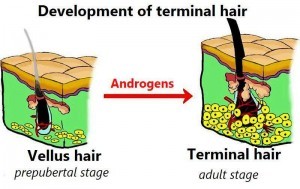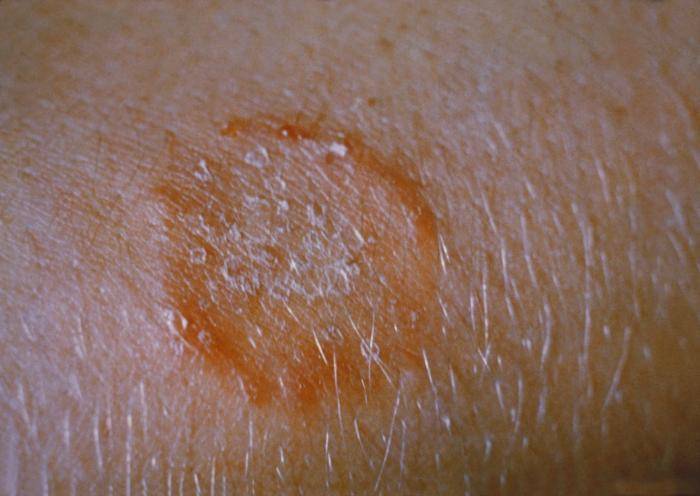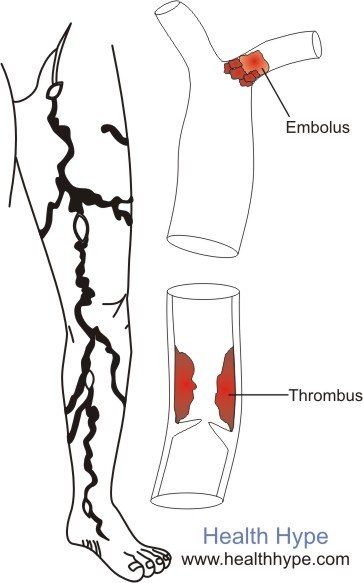Hair Loss on Legs (One or Both), Causes and Treatment
Hair loss is a common cosmetic problem but in most instances the focus is on the loss of scalp hair. However, hair loss can occur anywhere on the body where hair is found in abundance. This is more prominent for men who generally have thicker and denser body hair. Furthermore most men do not remove this body hair and are therefore more likely to notice when hair loss occurs on these areas. It can either occur on one leg or affect both legs simultaneously, and the reasons can vary from skin problems, to circulatory and even hormone disorders.
Growth of Leg Hair
Although there may be fine hair on the legs from early in life, the thicker leg hair growth generally starts at the time of puberty. It is similar to body hair in most other parts of the body like on the chest (men), armpits and groin region. This type of hair is known as terminal hair which is thicker, longer and darker than the finer and lighter hair from earlier in life which is known as vellus hair. It arises as a result of the hormonal changes in puberty, primarily due to the action of male hormones (androgens). It is therefore known as androgenic hair.

As with scalp hair, the body hair goes through three phases in its growth cycle. This is known as the anagen, catagen and telogen phases. Anagen phase is the growth phase where the hair follicles are active and the hair shaft grows in length. During the catagen phase, the follicles shrink and the shaft detaches. The telogen phase is also known as the resting phase because the follicle is dormant. Once the telogen phase finishes, the follicles return to the anagen phase.
Causes of Leg Hair Loss
Many of the causes of hair loss on the legs is due to the same causes as loss of scalp hair. However, one of the most common causes, peripheral artery diseases, is unique to the limbs of the body.
Poor Blood Circulation
The hair follicles like all living tissue need an adequate supply of blood to continue functioning. Nutrients and oxygen are delivered in the blood by the arteries. If this blood circulation is compromised then hair loss may occur. Peripheral artery disease is one of the common causes of hair loss on the legs. It arises when the leg arteries become narrow due to the build up of fatty plaques.
This is known as atherosclerosis. Other symptoms include pain in the legs with walking, cold and paleness of the legs and sometimes sores on the leg. Hair loss may occur on both legs if arteries in both legs are affected, or if a common artery of origin is compromised. If the artery only in one leg is affected then hair loss will only occur on one side.
Change In Hormone Levels
Testosterone is the main androgen (male sex hormone) that contributes to body hair growth. It is present in both males and females, although the levels are higher in males. Any disorder that causes a drop in the testosterone level can therefore lead to body hair loss. In males this is seen in conditions like hypogonadism while in both males and females it may occur with gonadotropin-deficiency.
Other symptoms may include reduced facial hair growth, lower muscle mass, erectile dysfunction, infertility and even enlargement of the breast tissue in males (gynecomastia). Hair loss on both legs will be occur as the cause is systemic, meaning that it is affecting the entire body.
Fungal Infections Of Leg
A skin fungus may also affect the hair on the infected area. Most fungal infections of the skin are due to dermatophytes. It tends to cause a red ring-like rash and is therefore often referred to as a ringworm. However, a fungus is not a worm. The hair loss may occur in and around this skin rash.
It will therefore be isolated to patches wherever the fungal infection occurs and is unlikely to affect the entire leg simultaneously. Itching, dry and peeling skin are some of the other symptoms of a fungal skin infection. Hair loss may occur on one or both legs depending on where the fungus has infected the skin.

Damage To Hair Follicles
Hair growth can be compromised if the follicles are damaged. This may occur with physical or chemical damage to the skin such as with burns, surgery, trauma and so on. Usually the skin will also be damaged and there may be scarring, dryness. peeling and/or redness of the skin.
Hair loss in this regard may be temporary or permanent. Sometimes hair removal procedures can cause permanent hair loss on the legs but this is usually desired as part of a cosmetic procedure. Hair loss is isolated to the area where the skin and follicle damage occurs.
Other Possible Causes
Hair loss on the legs may also occur as a symptom of other conditions. It may not always be a common symptom in these conditions.
- Hemochromatosis
- Hypothyroidism
- Thallium poisoning
Treatment for Hair Loss on Legs
The treatment for hair loss on the legs is dependent on the cause. Provided that there is no permanent damage to the hair follicles, it is possible that the hair loss can be undone. For example by improving the blood circulation to the legs with a combination of cholesterol-lowering drugs, antihypertensive drugs and blood thinners (depending on the medication necessary) can eventually allow for hair growth to return to the legs.

However, most people do not worry about treating hair loss on the legs as it is not a major cosmetic problem and does not pose any risk to a person’s health. Applications containing the hair-stimulant like minoxidil may be effective for treating hair loss on the legs, however it should only be used when prescribed by a doctor. Hormone medication are not advisable for treating hair loss on the legs specifically unless it is used to treat an underlying hormonal disorder. More invasive procedures like a hair transplant is not considered for hair loss on the legs.
References
- Hair Loss on Legs. Health Line
Last updated on September 24, 2018.

